Roughly five years ago, I had the pleasure of playing Warhammer Quest, a turn-based tactical role-playing game made by Rodeo where your warriors moved from tile to tile, taking out the unruly denizens of the world. Then my tablet broke after only a few hours of playing. It’s safe to say that Warhammer Quest 2: The End Times feels more like a fresh start.
One can think of it as a fresh start as well for developers Perchang (headed by Rodeo’s creative head, Ben Murch). Though, to be more precise, if you’ve played the previous game or Warhammer Quest 2’s mobile iteration (released for iOS and Android devices in 2017 and 2018 respectively), then you can easily familiarize yourself with the PC version which has ultrawide support and all the DLC included.
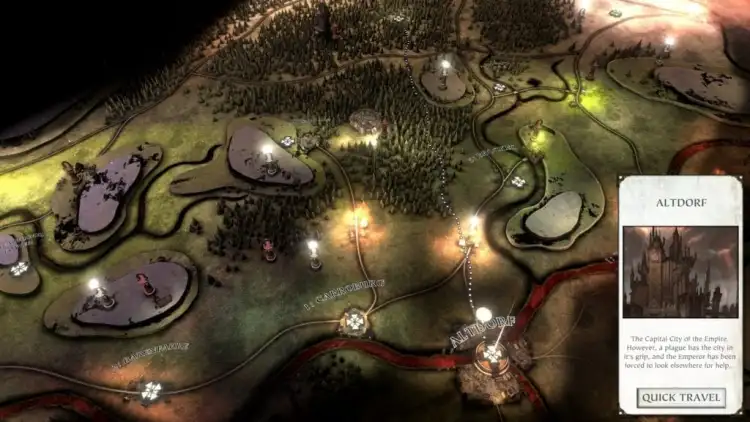
The game’s world map gives off some Game of Thrones vibes. The only thing that’s missing is Ramin Djawadi’s score.
These Are The End Times
The End Times was an event in Warhammer Fantasy Battles where the world was destroyed. The forces empowered by Chaos united, and valiant heroes desperately tried to survive to no avail. Numerous accidents, mishaps, and betrayals occurred leading to the world’s doom. This is the current setting of Warhammer Quest 2. Although the entire globe — from Lustria to Cathay — is feeling the wrath of Chaos Warriors, Beastmen, Skaven, and daemons, the entire game takes place solely in the lands of the Empire.
The first act takes place in the region of Middenland where you’re facing off against Nurgle’s plagued minions and rampaging Beastmen. From there, you’ll eventually travel to Reikland to fight the Skaven, and then to Talabheim to decimate Khorne’s followers.
Since The End Times saw sworn enemies come to terms in order to fight a common threat, so too does Warhammer Quest 2 start things off on that note. Your first two heroes are an Empire Captain and a Dark Elf Sorceress. Within a couple of battles, your squad is joined by a Wood Elf Glade Guard and a Vampire Blood Knight.
Eventually, you’ll be able to recruit or “save” different types of hero classes as well. You’ve got a dozen to choose from — Dwarf Slayers, Bretonnian Knights, Witch Hunters, High Elf Mages, and even mercenaries from the Ogre Kingdoms. Each faction which banded together during The End Times — minus the Lizardmen and Greenskins — is represented in Warhammer Quest 2.
Tactful Tactics
A tactical RPG or strategy game wouldn’t be of any import if the mechanics didn’t function well. Thankfully, Warhammer Quest 2: The End Times is easy enough to get into with only a slight learning curve at the start.
Each region has markers for the dungeons you can explore. Red markers are main missions that progress the story while white ones are your sidequests. These have various rewards that you can obtain at the end. Main missions are replayable; side missions are not. Once you clear them (or give up) they are replaced by a different sidequest with a random reward (an item, gold, or even a new hero). Also, while traveling from one marker to the next, an event might pop up. This could be an ambush battle, a stat check/strength test, or just an opportunity to pray at a shrine.
While in dungeons, your characters are bound by their action points (AP) limits. A majority of warriors you recruit have five AP, although others might start out with six. Almost every action in the game costs AP from movement, weapon attacks, spells, buffs, and debuffs. AP is fully replenished at the beginning of each turn.
Your characters also have stat allocations (apart from the usual health pool, inventory slots, and AP). They are:
- Strength – affects the damage of your weapon attacks; all attacks use strength unless said otherwise
- Dexterity – your accuracy; the enemy’s accuracy is slightly lower, thankfully
- Intelligence – affects the damage of spells
- Speed – affects the “Deathblow” mechanic; a Deathblow is an automatic free attack that can occur after you’ve already struck an opponent; you can chain multiple of these in a row especially with a high speed stat
Finally, attacks are divided into three types: Crushing (such as blunt weapons), Slashing (blades), or Piercing (arrows). Even spells follow the same rule.
Weapons Of War(hammer)
The basic mechanics are easy enough to understand but additional complexities come in the form of hundreds of different weapons, spells, and abilities you can equip. Some are limited to only a handful of classes; others (potions, AP regen items) might be viable for everyone.
Since every action costs points, you’ll need to be aware of the equipment you’re bringing to a fight. Is it worth using a powerful sword only to realize that you’re spending four AP each swing and your character only has five AP to use per turn? Probably not.
These abilities/items can be rewarded after clearing a dungeon or purchased from towns. There are those that are obviously useful for any occasion (such as the Weaponmaster accessory which reduces AP costs by one point). Likewise, there are those of questionable utility (armor that increases AP costs or has a chance of dropping your AP to zero at the start of a turn).
Kill-kill The Man-things in Warhammer Quest 2: The End Times
Warhammer Quest 2: The End Times has a lot of items for you to choose from, and that’s because you have a lot of enemies to kill. The first act in Middenheim has Beastmen hordes and minions of Grandfather Nurgle such as pox-infested villagers (plague zombies). The vicious, skittering Skaven have their clan rats, plague monks, clan Eshin’s assassins, and even a Grey Seer and a warlord that looks like Queek Headtaker. As for the Warriors of Chaos, marauding Norsca form the backbone of their armies. You might even encounter a few Chaos daemons along the way.
Each unit’s design is wonderfully drawn, enough for you to tell them apart (plague monks even have flies buzzing around them). Likewise, each enemy type has its own stat allocation and AP, meaning they’re bound by the same rules as you are. For instance, Eshin assassins have low HP but extremely high evasion stats. You could also get ambushed by different mobs whenever you end your turn and this can happen randomly.
Warhammer Quest 2: The End Times surpasses its predecessor in terms of enemy variety. Sadly, you’re generally looking at fairly common archetypes. While one unit may differ from another in terms of stats or looks, you’re simply going to focus on whether it’s a melee unit or a ranged one. Since each door you open will likely have dozens of monsters ready to pounce, it’s a case of quantity versus quality when you realize that a majority of enemy types only have basic roles to fill.
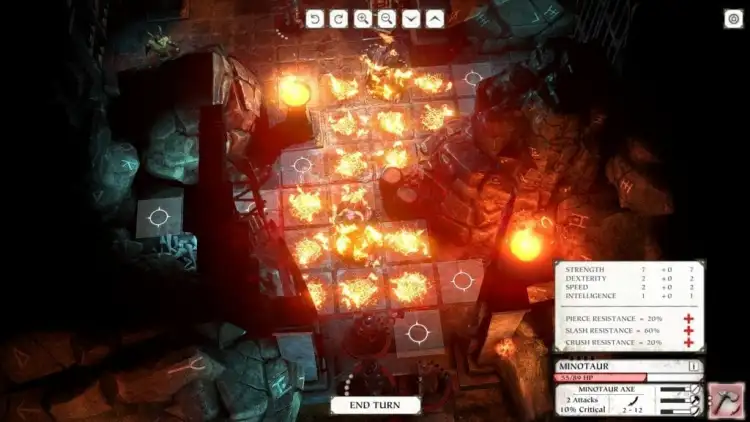
Enemies may have resistances, but they’re also resistant to common sense. They’ll happily run through burning tiles just to get to you.
Rudimentary And Random
As I continued playing the game (roughly 22 hours in), more flaws became apparent. I mentioned rewards coming from dungeons. While you do earn the reward readily seen when you click on a marker, additional ones are completely random. For instance, during an ambush battle, my Empire Captain soloed five minotaurs. I won… and had 50 gold to show for it.
Given that gold rewards are random, you could end up penniless for a time especially since leveling up costs gold in the first place. You’re going to have to farm a few more dungeons and hope for the best, or “sell” unwanted warriors and items.
As for leveling up, character progression is also random! For example, I had two Warrior Priests — same name, same stats. I leveled up both. One earned HP, the other earned strength. Barring copying an old save file, you have no control whatsoever with the stats that your characters gain when they level up. This means you could end up with a “stunted stunty” — a Dwarf Slayer which receives intelligence boosts. Even Gotrek would scoff at the idea and that ain’t a grudgin’.
If by any chance you had enough gold to recruit a warrior or buy an item, be forewarned that RNG also rears its ugly head. That’s because market wares and tavern recruitment pools can change after some time. The game isn’t really clear when this happens. I just ended up checking Altdorf and each settlement every now and then.
Think of grinding for gold, heroes, and gear as your destination. It can be rewarding, but the journey has to be meaningful as well. Sadly, Warhammer Quest 2: The End Times is lacking in that regard. The flaws become apparent after half a dozen hours or so of seeing the same rooms and enemies, initiating the same attacks over and over, and hearing the lone music track for every dungeon.
Warhammer Quest 2: The End Times – Lather, Rinse, Repeat
To be fair, Warhammer Quest 2 isn’t a bad game at all. As mentioned, enemy numbers and variety exceed that of the first game. The game’s environs are wonderfully drawn even if they’re repetitive. There are a plethora of skills and items you can mix and match to obtain an optimal setup, which means customization is a plus. The game is highly stable (I haven’t experienced a single crash or stutter at all). And, as mentioned earlier, all the previous DLC from the mobile version have been included — no extra microtransactions at all.
Unfortunately, a number of issues from RNG mechanics to monotonous dungeon runs mar what could’ve been an amazing experience. It might be stellar on mobiles and tablets owing to shorter bursts of playing time. Sadly, as a PC title — where it’s common for strategy game playthroughs to last several hours per sitting — it needs more than just a retouch.

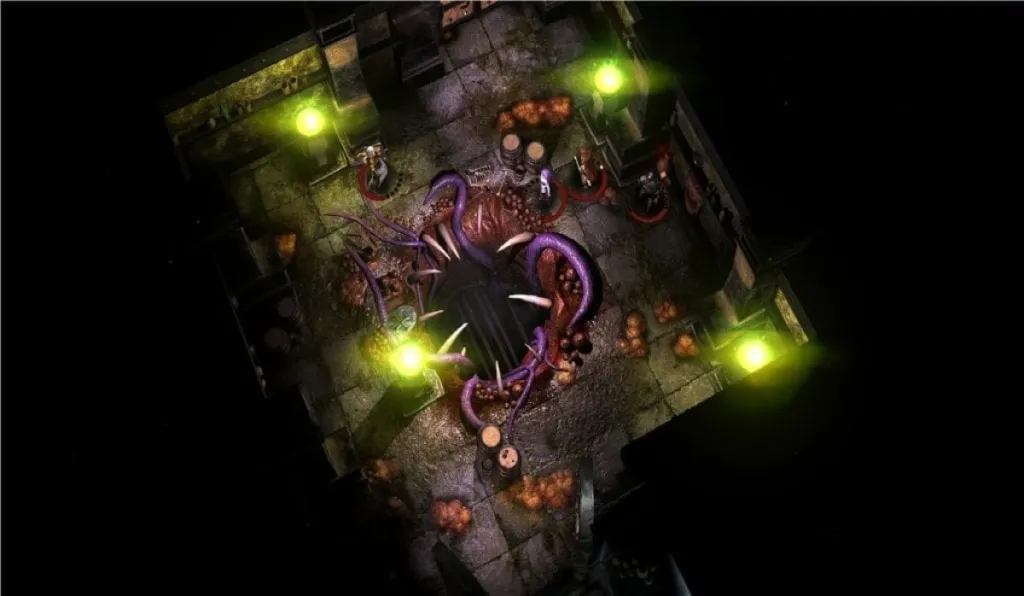
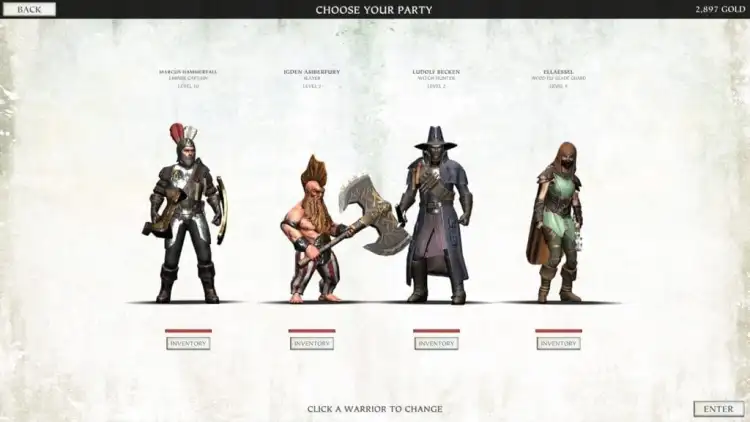
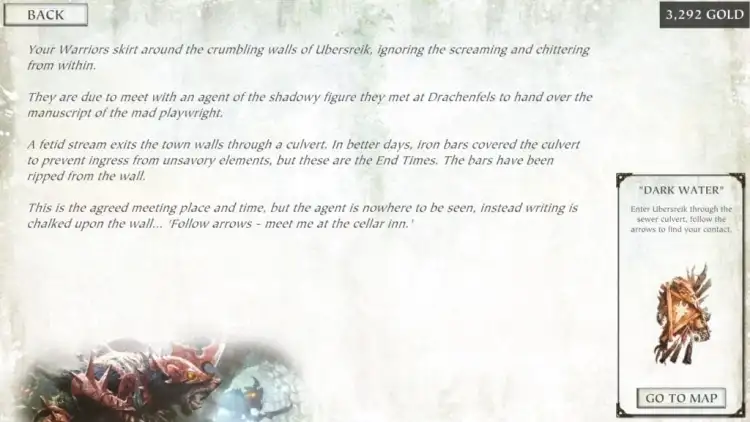
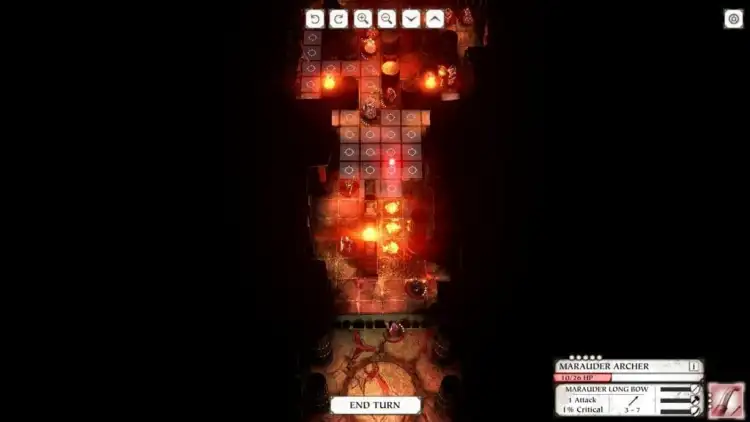
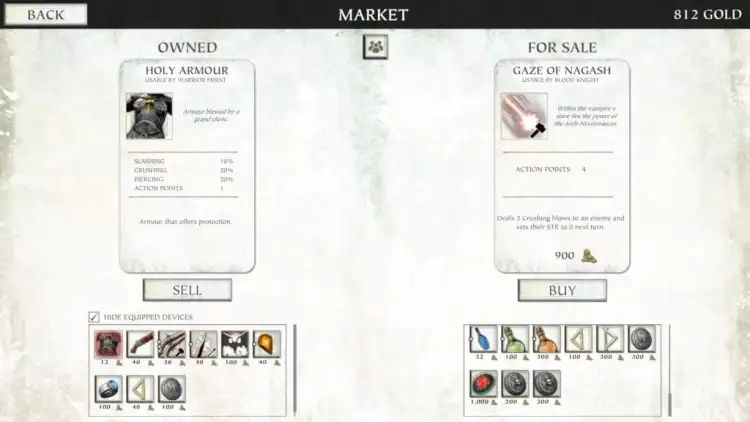
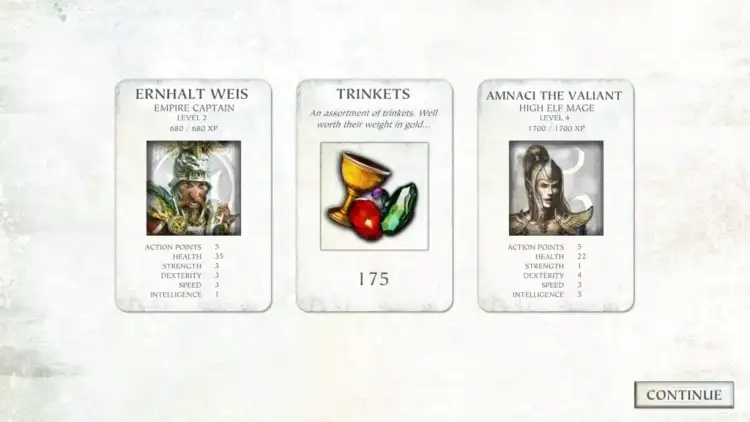
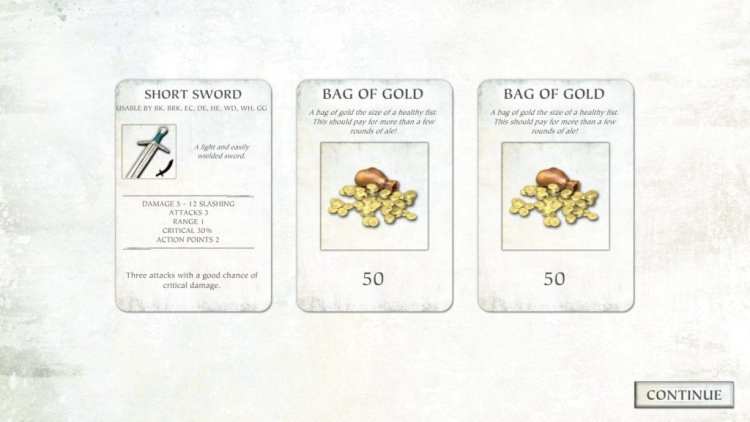





Published: Jan 31, 2019 01:50 am